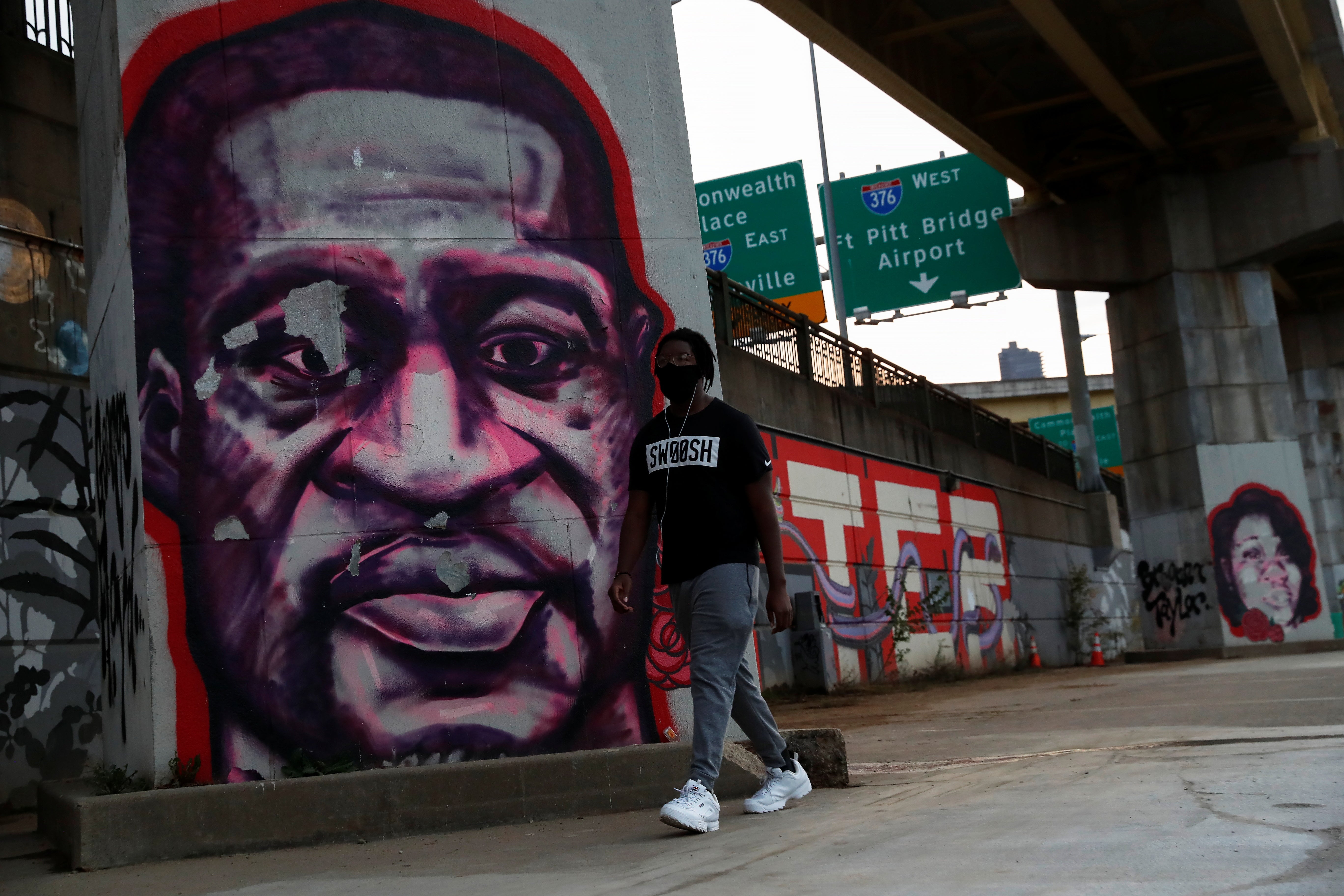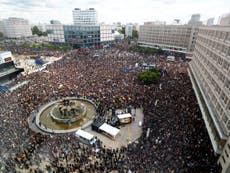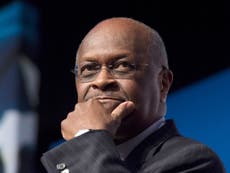Breonna Taylor, George Floyd and a national reckoning
In the 18th instalment of our series recapping an unprecedented presidency, Joe Sommerlad looks at the police killings of two African Americans that reignited Black Lives Matter demonstrations nationwide and saw the president stoke conservative fears


Donald Trump, a man who had once boasted he could shoot someone in the middle of 5th Avenue and get away with it, had lectured America’s police officers on law enforcement during the first summer of his presidency, telling them that, when it comes to apprehending suspects: “Please don’t be too nice.”
Addressing officers at Suffolk Community College on Long Island, New York, on 28 July 2017, he had launched into an attack on what he considered to be a culture of excessive caution, encouraging police to be rough with ”thugs being thrown into the back of a paddy wagon” and not to be unduly concerned with shielding an arrested person’s head when shoving them into the back of a squad car. “You can take the hand away, OK?”
It was a disturbing example for the commander-in-chief to be setting, to say the least, explicitly advocating violence and risking further inflaming long-running distrust among urban communities.
But it took the shooting of 26-year-old African American emergency room technician Breonna Taylor by three white officers in her own apartment in Louisville, Kentucky, on 13 March 2020 before those tensions finally boiled over during his presidency.
Her tragic killing, by officers who had forced entry while investigating her boyfriend for drug offences, would spark local protest action before really capturing the nation’s attention when a second black person was killed on 25 May in another senseless act of racially-charged violence.
Nightclub bouncer George Floyd, 46, was detained by white officer Derek Chauvin outside of Cup Foods convenience store in Minneapolis, Minnesota, after an inexperienced clerk had accused him of attempting to pay for cigarettes with a counterfeit $20 bill.
Chauvin pushed Floyd to the curb, handcuffed him and pinned a knee against his neck for almost 10 minutes, ignoring the man’s pleas for breath until they suddenly stopped.
Activists called not just for Floyd’s killer to be brought to justice but for entire police departments to be defunded and for American society to confront its racist history and fundamentally rethink its relationship with the ‘heroes’ of its past
Floyd’s name was quickly added to Taylor’s and those of Trayvon Martin, Michael Brown, Eric Garner and countless other black victims of lethal force.
Mobile phone and security camera footage of Chauvin fatally choking Floyd shocked a world watching at home - cooped up in lockdown - and inspired furious Black Lives Matter protests in cities across the nation, from Oakland to Portland, with citizens taking to the streets in spite of the coronavirus risk to denounce injustice.
As many as 26 million people would join the demonstrations that raged for successive nights, and saw activists calling not just for Floyd’s killer to be brought to justice but for entire police departments to be defunded and for American society to confront its racist history and fundamentally rethink its relationship with the “heroes” of its past. Statues of slave-owning Founding Fathers and Confederate generals were vandalised and toppled over amid the mood of righteous indignation.
Ugly clashes with riot police, looting and vandalism also ensued, with peaceful demonstrators and even reporters getting caught up in the melee mid-broadcast, while sympathy protests blew up in more than 60 other countries.
Mr Trump’s initial reaction to this explosive moment of national reckoning was to call for a crackdown, offering to send in the National Guard to help state governors restore order and expressing frustration when they declined.
Adopting a Nixonian “law and order” posture - primarily by just tweeting the words “LAW & ORDER!” - the president railed at “Antifa agitators”, whom he baselessly accused of being domestic terrorists orchestrating the unrest, and Democratic city leaders for making him look bad, pushing the same polarising culture war narrative he had tested at Charlottesville.
More damaging still, Mr Trump tweeted the phrase “looting leads to shooting” on 29 May, quoting - knowingly or not - notorious Miami police chief Walter Headley, who coined it in December 1967 at the height of the Civil Rights era when announcing tougher policies for controlling the city’s black neighbourhoods.
But the president’s worst intervention came on 1 June when he emerged from the White House basement bunker he had been cowering in to order the tear-gassing of protesters in DC’s Lafayette Square, clearing the way for a photo opportunity outside St John’s Epsicopal Church.
When the smoke cleared, Mr Trump stepped out to inspect graffiti and fire damage to the chapel before holding aloft a copy of the Bible - not his own and upside-down - hoping to look like a concerned man of faith, projecting steely authority.
Instead, the incident was widely regarded as an appalling assault on the demonstrators’ First Amendment right to freedom of assembly and described by The New York Times as "a burst of violence unlike any seen in the shadow of the White House in generations".
It would not, however, be the last.
Chairman of the joint chiefs of staff Mark Milley would later publicly apologise for taking part in the stunt, saying he “should not have been there” to lend undeserved military credibility.
No such remorse was forthcoming from the president, attorney general William Barr, defence secretary Mark Esper or national security advisor Robert O’Brien.
Mr Trump would cause yet more offence on 5 June when he held a Rose Garden event to hail the artificial economic bounceback prompted by Republican-led states emerging prematurely from lockdown - over 100,000 Americans were dead by this point - and invoked George Floyd by name, declaring that he would be "looking down right now and saying this is a great thing that’s happening for our country".
Even for an opportunist as tactless as Mr Trump, this was startling.
As the protests gradually cooled, no thanks to the president or the rabid coverage being served up by Fox News - where Tucker Carlson had warned suburban viewers Black Lives Matter activists were “coming for you”, costing him lucrative sponsors - the coronavirus thrived and the outrages continued.
Having made liberal use of his pardoning power to excuse political hustler Roger Stone for seeking out Russia-hacked Democratic Party emails during the 2016 campaign (Michael Flynn would follow in November), the president returned to rallying, ignoring the threat posed by the pandemic with a new arena event in Tulsa, Oklahoma, which his campaign manager Brad Parscale claimed had attracted 1 million advanced ticket reservations.
The choice of location was doubly insensitive in light of the Taylor and Floyd killings, given that the dust bowl city had been the scene of a vicious race massacre in 1921 and because its date coincided with Juneteenth, celebrating the emancipation of the slaves.
Mr Trump delayed for a day but the event was nevertheless a crushing humiliation: just 6,200 attended, Mr Parscale having been rooked by a TikTok campaign that saw teen users of the video app applying for tickets with no intention of attending.
Worse, Herman Cain - a prominent black Republican and former presidential candidate whom Mr Trump had once hoped to place on the board of the Federal Reserve - contracted Covid-19 at the rally having declined to wear a mask and passed away a month later.
Mr Parscale, already facing accusations of “fleecing” Mr Trump and enriching himself at the campaign’s expense, was swiftly dismissed and later suffered a breakdown, taken into custody at home in Florida when his wife called the police saying she feared he might attempt to take his own life.
Read the full The Trump Review series here


Join our commenting forum
Join thought-provoking conversations, follow other Independent readers and see their replies
Comments